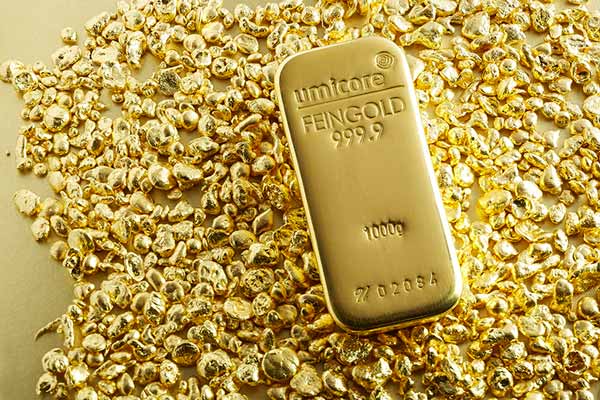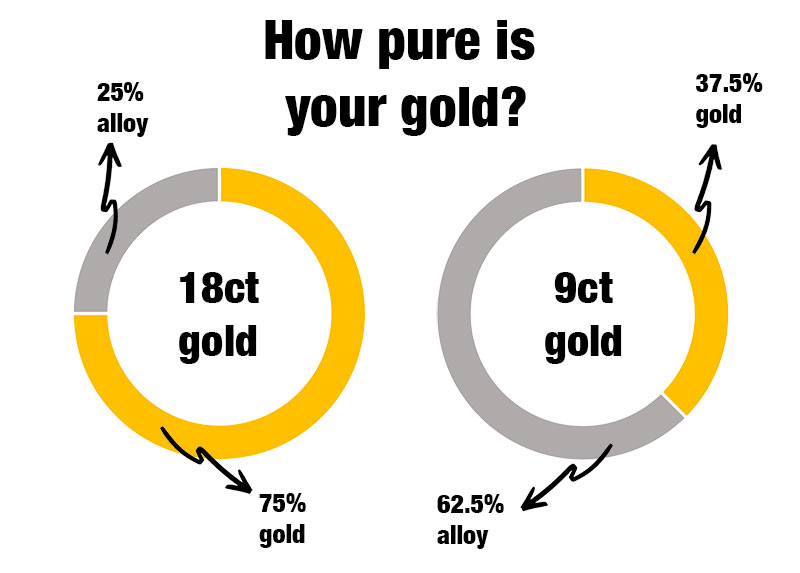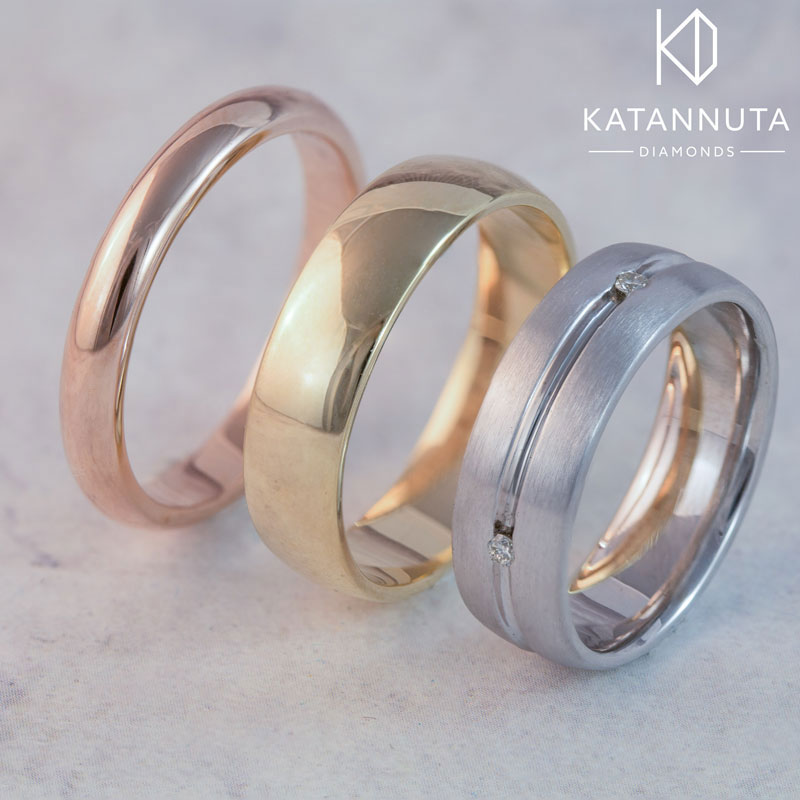Picture this: you’re shopping for the perfect engagement ring and the salesperson asks you if you’re looking for a 9ct gold ring or an 18ct gold ring. You ask them which option is better and they answer, “Why, 18ct gold of course”. Then you ask which is cheaper (because, like most people, you have a budget that you want to stick to) and they respond, “9ct gold is the cheaper than 18ct gold”.
You might have got the answers to your questions, but you haven’t been told what the difference between 9ct vs 18ct gold is, why one is better than the other and why there is such a big price difference between the two. We’re here to break it down for you and make it easy for you to understand so you can make the best choice for you.
What is pure gold?
In its purest form, gold is a reddish-yellow, soft, malleable, and ductile metal, with the chemical symbol Au. Gold is a relatively rare element, and a precious metal that is mined in numerous countries around the world, including South Africa. Currently, 50% of all gold produced world-wide is used in the jewellery industry.
Pure gold is also known as 24ct gold but is too soft to use in jewellery on its own (ie. as 100% gold), so gold is alloyed with other metals to make it harder, more durable, and more practical for everyday jewellery wear. Altering the percentages and types of alloys used will lead to different purities and colours of gold.

Pure gold – or 24ct gold – is too soft to use in jewellery manufacture.
9ct gold vs 18ct gold
Gold caratage (eg 9ct or 14ct or 18ct) refers to the purity of the gold – i.e. what the gold content is of the item of jewellery. Calculating the percentage of gold is done by dividing the carat number (eg 9 or 18) by 24 (the caratage of pure gold). Thus, 18ct gold is 75% gold and 25% alloy metals (18/25 = 0.75). By contrast, 9ct gold is only 37.5% gold, and 62.5% alloy metals. To show the visual difference, take a look at the charts below:

9ct gold and 18ct gold have different quantities of gold and alloy metals, leading to different visual and physical properties.
It’s easy to see the difference from a gold content perspective, but how does this affect your jewellery?
Is 9ct gold harder than 18ct gold?
There is a common belief that 9ct gold is harder than 18ct gold and thus better for daily wear, but this is a yet another jewellery industry myth. Metal hardness is measured according to the Vickers scale and, contrary to what you’ve heard, 18ct gold ranks harder on this scale than 9ct gold.
Because 9ct gold has a higher percentage of alloy metals than gold, it can be more brittle and less resistant to knocks and scratches than 18ct gold. The most common alloys used in gold manufacture are silver and copper, but palladium, zinc and nickel can also be used to alloy white gold.
Why is 18ct gold more expensive than 9ct gold?
Quite simply, 18ct gold has double the amount of gold content than 9ct gold. Gold is more expensive than the alloy metals of silver and copper, so it’s logical that the higher the gold content, the more expensive it will be. Labour costs for manufacturing an item of jewellery will be the same, irrespective of the gold purity.

An 18ct gold wedding ring set. His ring (left) is made of 18ct yellow gold; her ring (right) is made of 18ct rose gold.
Can you see a difference between 9ct gold and 18ct gold?
There are visible differences between 9ct gold vs 18ct gold if you know what you’re looking for. With regards to traditional yellow gold, 18ct gold has a much richer, deeper yellow colour than 9ct yellow gold, due to the higher gold content. For rose gold, 18ct rose gold will have more of a yellow undertone to it than 9ct rose gold (which has a higher copper content and therefore more of a reddish colour). When it comes to white gold, 9ct white gold will have a higher silver content and sometimes even be alloyed with palladium, which gives it a whiter colour than 18ct white gold (which, with 75% gold, is more yellow in hue).

Gold granules, showing the distinct colour differences between pure (fine) gold, and various gold alloys.
Bear in mind that all white gold (both 9ct and 18ct) is rhodium plated, so a brand new 9ct white gold ring will look exactly the same as an 18ct white gold ring at the start. Over time, the rhodium plating will wear off, and the natural colour of the gold will start to show. Have a look at this earlier blog post for more information regarding the rhodium plating of white gold.
Does gold tarnish?
Gold is a noble metal and is one of the least reactive of all elements, so it doesn’t tarnish in its 100% pure, natural form. But, because in jewellery gold is alloyed with other metals you need to be aware of how the alloy metals may behave. As 9ct gold contains 62.5% alloy metals, which are more susceptible to tarnishing and eroding than gold, 9ct gold is more likely to discolour and be damaged by exposure to chemicals vs 18ct gold, which is only 25% alloy (something to bear in mind in this era of Covid-19 and the incessant use of hand sanitisers).

Rose gold, yellow gold and white gold men’s wedding rings, all in 9ct gold.
Should I buy a 9ct gold ring or an 18ct gold ring?
Now that you know the differences between the two, it’s up to you to decide which option you’d prefer. 18ct gold is by far the superior option and the one that will last the longest, so if it’s an engagement ring you’re looking for, or a piece of jewellery that you’d like as a family heirloom, 18ct gold is your best bet. It’s more valuable and will last better over time in the long run.
If you’re looking for a dress ring, cocktail ring or a trinket type of ring, there’s nothing wrong with 9ct gold. The same goes for earrings and pendants if you’re looking at semi-precious gemstones. We also always recommend matching the value of the gemstones to the value of the metal.
How can I check the purity of my gold jewellery?
All gold jewellery should be stamped with a hallmark indicating the purity of gold used. If a piece of jewellery is 9ct gold, it will display either a 9ct (or 9k) stamp, or be stamped as 375 (indicating 37.5% gold). An 18ct gold item of jewellery will have an 18ct (or 18k) stamp, or alternatively display “750” (indicating 75% gold). It’s worth noting that in other countries, 10ct and 14ct gold may also be produced.

18ct and 9ct gold stamps visible inside our bespoke rings, in addition to the ZA stamp (mandatory for jewellery manufactured in South Africa).
At Katannuta Diamonds, our focus always starts with education so if you’re still not sure what the best metal for your engagement ring or bespoke jewellery is, do reach out and contact us so we can answer your questions.




![The ONLY reason to buy lab-grown diamonds [And it might not be the reason you think]](https://katannutadiamonds.co.za/wp-content/uploads/2023/11/Solitaire-lab-grown-diamond-ring-500x383.jpg)
